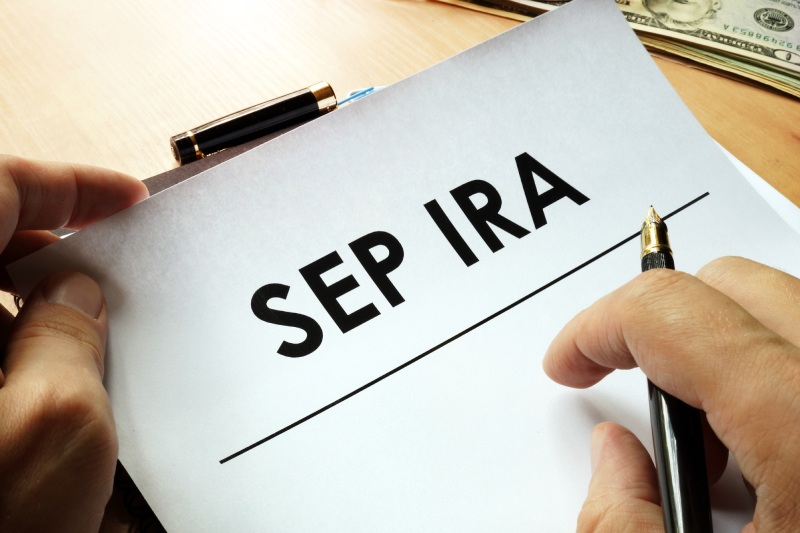Business
The Income Limitations and 2023 SEP IRA Contributions: Important Information For Retirement Savers

One of the best methods for small businesses and independent contractors to assist staff members with retirement savings is through SEP IRAs, to which they will be able to contribute even more in 2024 than in 2023. Employers can contribute tens of thousands of dollars on their employees’ behalf to SEP IRAs, which is far more than what an individual could contribute to a standard IRA.
Contributions to a SEP IRA in 2023 can total up to $66,000, or up to 25 percent of the user’s income or business earnings, whichever is lower. In 2024, that figure rises to $69,000. Contributions to a SEP IRA for 2023 can be made up to April 15, 2024, the day of taxes. An employer funds SEP IRAs, hence they do not allow catch-up contributions.
The increases are a part of a larger series of adjustments to contribution caps in a variety of retirement account types, such as 401(k) and 403(b) plans, regular and Roth IRAs, and others.
SEP IRA Contribution Limits
A SEP IRA’s contribution cap is the lower of:
- 25 percent of the worker’s salary
- $66,000 (estimated for 2023) or $69,000 (2024)
The SEP IRA is funded by the employer, not the employee; that is, the business makes the contribution, not the employee. Neither an IRA nor a 401(k) include a catch-up provision for older workers, nor do SEP IRAs.
On the other hand, a different choice that is well-liked by one-person enterprises is the solo 401(k), which does permit catch-up contributions, making it a potentially more alluring choice for some tiny businesses.
The yearly compensation utilized to calculate retirement plan contributions to SEP IRAs is limited. That cap is $330,000 for 2023, up from $305,000 for 2022. In 2024, the cap increases to $345,000, and the IRS modifies it every year.
Are Contributions to both SEP and IRA allowed?
Enrolling in an employer-sponsored SEP IRA does not preclude you from contributing to a regular or Roth IRA. In the same tax year, you are able to contribute the maximum amount to either your regular or Roth IRA or your employer’s SEP IRA.
But, if you make contributions to your SEP IRA as an employee (rather than an employer), as certain SEP IRA plans do, your contribution cap to other IRAs is lowered dollar-for-dollar.
Thus, if your goal is to maximize your retirement savings, allow your employer to fund your SEP IRA to the fullest extent possible while you, the employee, fund your own individual IRA.
Currently, SEP IRAs have a Roth option
One of the most well-liked and potent retirement accounts is the Roth IRA, and small businesses can now take advantage of the Roth after-tax option through the SEP IRA.
Prior to 2023, there was only one kind of SEP IRA: pre-tax. Employers made contributions on behalf of their workers; but, upon withdrawal of the funds upon retirement, the workers were required to pay conventional income taxes. In general, the distribution guidelines function just like they would in a conventional IRA.
Employers can now provide Roth SEP IRA plans because of the SECURE Act 2.0. The funds are deposited post-tax, have the potential to grow tax-free, and are extracted tax-free at retirement.
In Summary
Small businesses can contribute to their employees’ retirement plans through the SEP IRA. If you want to maximize your retirement contributions, it’s critical to stay informed about the annual increases to the maximum contributions.
-

 Sports4 weeks ago
Sports4 weeks agoAl Ahly vs Inter Miami, 2025 FIFA Club World Cup – Preview, Prediction, Predicted Lineups and How to Watch
-
Health3 weeks ago
Back to Roots: Ayurveda Offers Natural Cure for Common Hair Woes
-

 Tech3 weeks ago
Tech3 weeks agoFrom Soil to Silicon: The Rise of Agriculture AI and Drone Innovations in 2025
-

 Startup4 weeks ago
Startup4 weeks agoHow Instagram Is Driving Global Social Media Marketing Trends
-

 Sports3 weeks ago
Sports3 weeks agoFIBA 3×3 World Cup 2025: Full Schedule, Preview, and How to Watch
-

 Science4 days ago
Science4 days agoJuly Full Moon 2025: Everything You Should Need to Know, When and Where to See Buck Moon
-

 Gadget3 weeks ago
Gadget3 weeks agoThings to Know about Samsung Galaxy S26: What’s New and What’s Next
-

 Sports4 weeks ago
Sports4 weeks agoWorld Judo Championships 2025: Full Schedule, Date, Time, Key Athletes and How to Watch

























